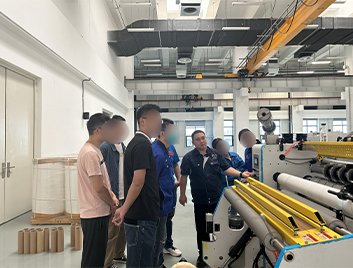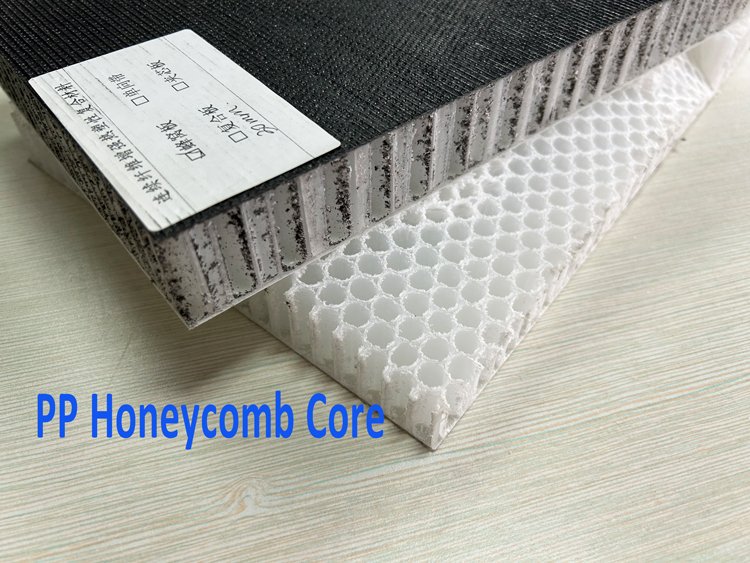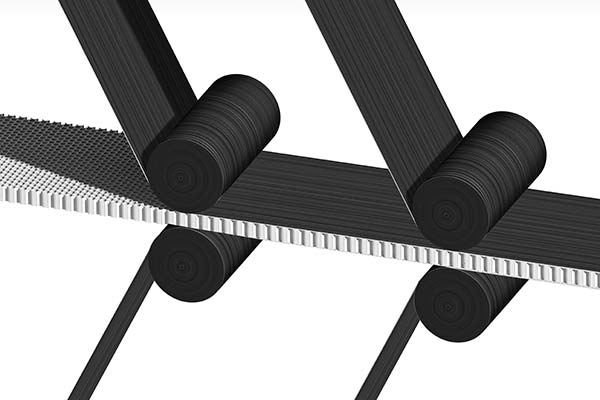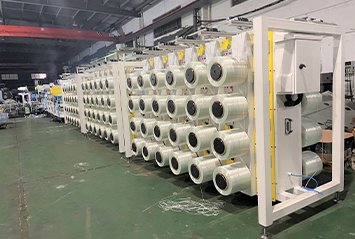Double Belt Press Machine for Thermoplastic Composite Sandwich Panels Manufacturing
- Oil-Electric Hybrid Heating System
- From 1500mm-3000mm Width
- The World’s First 50*120 Wide-Body Aluminum Square Tubing
- Woring for Thermoplastic Foam & Honeycomb Core
One-Stop Service For Lightweight Fiberglass Material
Thermoplastic skins or laminate sheets are composite sheets composed of Continuous Fiber Reinforced Thermoplastic (CFRT) unidirectional prepreg tapes, arranged in one or more combinations of fiber orientations, such as 0°, 45°, -45°, 90°, etc.
These sheets are manufactured through a process involving both hot and cold pressing.
Additionally, they can be integrated with high-performance core materials, including honeycomb sandwich panels, PET foams, polyurethane panels, among others, or can be combined with non-woven materials to create innovative sandwich composite panels

Jota Machinery: Your Reliable CFRTP CFRP Prepreg Machine Manufacturer in China
Jota is the original CFRTP CFRP prepreg machine manufacturer here in China.
With our own factory and CNC center, equipment quality could be effectively guaranteed.
Please send us an inquiry to make a WhatsApp video call, let’s show you our real-time factory and CNC center.

Jota CNC Center
CFRT Composite Sandwich Panels
- Thermoplastic composites have more impact strength than short fiber
- The core material can be foam or PP/PET honeycomb
- An ideal lightweight advanced product in the 21st century
- Working for RVs, EVs and refrigerated containers


Installation and operation user manual, wire connection diagram, tension controller guide.
100% Response for offline training
One-on-one remote video call assistance.
On-site installation and operation guidance.
- Focus Factory
- Dear Customer
- Professional Team
Around 30-45 days, mainly depends on machine type.
Sure, it is our honor to work for you.
We will offer you some parts as backup, in case any part is broken within one year, we will sent you for free.
Sure, if we have client in your country, we will offer.
Revolutionizing Vehicle Lightweighting with Thermoplastic Composite Sandwich Panels and Advanced Manufacturing
With the continuous development of the trend towards automotive lightweighting especially the increasing demand for lightweight bodies in electric logistics vehicles, the market for thermoplastic composite sandwich (honeycomb)panels is experiencing vigorous growth.

In China, a multitude of specialized continuous heating press machine manufacturers have emerged, specializing in Teflon double belt press machines or steel belt press machines.
One notable manufacturer in this space is Jota Machinery.

The concept of automotive lightweighting aims to maximize the reduction in the overall vehicle weight while ensuring the safety performance of the vehicle.
From a technical perspective, many automotive body components can now be replaced with lightweight materials instead of traditional steel structures.
These new materials not only meet safety and durability requirements but are also easier to work with in complex molding and design, thus saving a significant amount in tooling costs and time.

Additionally, one of the most apparent advantages of lightweight materials is the reduction in the overall vehicle weight, leading to improved fuel efficiency and reduced costs in transportation and storage compared to traditional materials like steel.
Due to their lighter weight and smaller inertia, vehicles experience enhanced acceleration performance, and in emergency braking situations at high speeds, the reduced inertia significantly shortens the braking distance, thereby enhancing passenger safety.
Thermoplastic honeycomb cores are experiencing a surge in demand, thanks to their impressive combination of lightweight design and remarkable strength.
This growing interest is particularly evident in the new energy electric vehicle sector.
According to a report from the International Aluminum Association, a 1% reduction in vehicle weight can save 0.6% to 0.8% of energy consumption.
As a material for electric vehicle bodies thermoplastic honeycomb cores can reduce vehicle weight, improve energy efficiency, and effectively increase the driving range under the same energy storage conditions.
Therefore, the demand for lightweight and high-strength thermoplastic honeycomb materials is particularly urgent for electric logistics vehicles.
Fiberglass honeycomb composite sandwich panels, initially inspired by biomimicry, are distinguished by their key features, which encompass lightweight design, an impressive strength-to-weight ratio, sound insulation properties, effective thermal insulation, and shock absorption capabilities.

Sandwich panels were initially used in fields with extremely high-quality requirements, such as aviation and aerospace.
With the advancement of composites material science and the maturation of the manufacturing process for sandwich panels, the cost of constituent materials has gradually decreased.
These sandwich panels, once limited to high-tech applications, are now increasingly applied in civilian industries, including construction, automotive, packaging, transportation, furniture, and decoration, among others.
Thermoplastic honeycomb cores (PP honeycomb cores) are a novel structural material processed based on the biomimetic principle of honeycomb cells.

They can be combined with various types of surface panels, such as fiberglass, wood-grain panels, aluminum panels, stainless steel panels, marble panels, and rubber panels, among others.
PP honeycomb cores find extensive application in activated carbon air filters, notably in air purifiers and industrial air filtration systems.

Their primary role is to aid in adsorbing odors, formaldehyde, benzene, and various other harmful gases present in the air.
Compared to traditional honeycomb products, PP honeycomb cores have clear advantages, with lower costs than aluminum honeycomb, longer service life than paper honeycomb, and high customization capabilities.
Currently, PP honeycomb cores are gradually replacing other honeycomb materials, a trend that is becoming increasingly evident.
Traditional fiber-reinforced thermoset honeycomb sandwich structures exhibit several shortcomings, including poor toughness, challenges in raw material storage, and a lack of recyclability post-curing.
In recent years, the development and application of thermoplastic honeycomb sandwich panels have become increasingly widespread.
Surface materials mainly include glass fiber (GF) felt-reinforced thermoplastic plastic sheets, continuous fiber-reinforced thermoplastic plastic sheets, and glass fiber-reinforced polypropylene composite yarn fabric, while core materials consist of polypropylene (PP) and polycarbonate (PC) honeycomb materials, among others.
Depending on the planar projection shape, honeycomb cores can be divided into various types, such as regular hexagons, rhombuses, rectangles, sine wave shapes, and hexagons with reinforcement strips, among others.

The composite methods for thermoplastic honeycomb sandwich panels mainly fall into two categories: adhesive bonding and melt bonding.
For the rapidly developing field of new energy vehicles, the demand for lightweight materials becomes increasingly urgent.
Reducing vehicle weight means reducing the energy required for the power system, allowing the same number of batteries to achieve faster and longer-distance travel.

This is what users expect and what automotive manufacturers urgently need.
At the current level of battery technology, reducing vehicle weight is significantly more cost-effective than increasing the number of batteries.






















